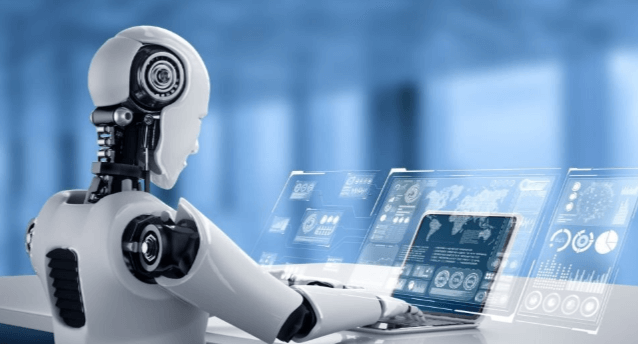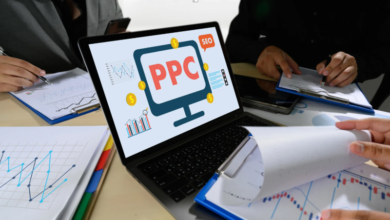How are advancements in machine learning algorithms enhancing predictive analytics in sectors like finance and healthcare?

Predictive analytics has become a cornerstone of modern business intelligence, enabling organizations to foresee trends, make informed decisions, and optimize outcomes. With the advent of advanced machine learning (ML) algorithms, predictive analytics has reached new heights, particularly in finance and healthcare. These sectors leverage ML to enhance accuracy, efficiency, and innovation, transforming their operations and service delivery.
Understanding Predictive Analytics
Predictive analytics involves using statistical algorithms and machine learning techniques to identify the likelihood of future outcomes based on historical data. This process helps organizations anticipate trends, behaviors, and events, enabling proactive decision-making.
The Evolution of Machine Learning Algorithms
Machine learning algorithms have evolved significantly, from simple linear regression models to complex neural networks. Innovations such as deep learning, reinforcement learning, and unsupervised learning have expanded the capabilities of predictive analytics, making it more accurate and versatile.
The Intersection of Machine Learning and Predictive Analytics
Machine learning enhances predictive analytics by automating the data analysis process, improving accuracy, and uncovering patterns that traditional methods might miss. This synergy allows for real-time predictions and more nuanced insights.
Machine Learning in Finance: Transforming Risk Management
Credit Scoring and Risk Assessment
ML algorithms analyze vast amounts of data to assess creditworthiness, reducing the risk of default. They evaluate not just financial history but also social media activity, purchase history, and more, providing a holistic view of a borrower’s risk profile.
Fraud Detection and Prevention
Machine learning models detect unusual patterns and anomalies in transaction data, flagging potential fraudulent activities in real-time. This proactive approach significantly reduces the incidence of financial fraud.
Algorithmic Trading
ML algorithms analyze market trends and historical data to predict stock movements, enabling high-frequency trading with minimal human intervention. This has led to more efficient and profitable trading strategies.
Machine Learning in Healthcare: Revolutionizing Patient Care
Predictive Diagnostics
Machine learning models analyze medical records, genetic information, and lifestyle data to predict the likelihood of diseases such as cancer and diabetes. This enables early intervention and personalized treatment plans.
Personalized Medicine
By analyzing a patient’s genetic makeup and response to different treatments, ML algorithms can recommend personalized treatment plans, increasing the efficacy of medical interventions.
Operational Efficiency
Predictive analytics powered by machine learning helps hospitals optimize their operations, from predicting patient admissions to managing staff schedules and resource allocation.
Enhancing Data Quality and Integration
Data Cleansing and Preparation
Machine learning algorithms automate data cleansing, ensuring high-quality data for accurate predictions. They can identify and correct errors, missing values, and inconsistencies in large datasets.
Integrating Diverse Data Sources
ML models can integrate data from various sources, such as electronic health records (EHRs), financial transactions, and social media, providing a comprehensive view for more accurate predictions.
Overcoming Challenges in Predictive Analytics
Handling Big Data
The vast amount of data generated today poses challenges in storage, processing, and analysis. Advanced ML algorithms can handle big data efficiently, extracting valuable insights without overwhelming computational resources.
Ensuring Data Privacy and Security
In sectors like finance and healthcare, data privacy is paramount. Machine learning models are being developed to enhance data security, ensuring that sensitive information is protected while still being useful for predictive analytics.
Future Trends in Machine Learning and Predictive Analytics
Explainable AI
As ML models become more complex, understanding their decision-making processes is crucial. Explainable AI aims to make these models transparent, ensuring that their predictions can be trusted and validated.
Real-Time Predictive Analytics
Advancements in ML are making real-time predictive analytics a reality. This enables organizations to make instant, data-driven decisions, enhancing responsiveness and agility.
Integration with IoT
The Internet of Things (IoT) generates vast amounts of real-time data. Integrating ML algorithms with IoT devices can enhance predictive analytics, providing timely insights for sectors like healthcare and finance.
Practical Applications and Case Studies
Case Study: Predictive Analytics in Banking
A leading bank implemented machine learning algorithms to predict loan defaults. By analyzing historical loan data and customer behavior, the bank reduced its default rate by 15%, saving millions of dollars annually.
Case Study: Healthcare Predictive Analytics
A major hospital used ML models to predict patient readmissions. By identifying high-risk patients and providing targeted interventions, the hospital reduced readmission rates by 20%, improving patient outcomes and operational efficiency.
The Role of Human Expertise
Combining Human and Machine Intelligence
While machine learning enhances predictive analytics, human expertise remains crucial. Data scientists interpret ML model outputs, ensuring that predictions are contextually relevant and actionable.
Ethical Considerations
Human oversight is essential to address ethical concerns, such as bias in ML models. Ensuring that predictive analytics is fair and unbiased requires a collaborative effort between machines and humans.
Conclusion
Advancements in machine learning algorithms are significantly enhancing predictive analytics in sectors like finance and healthcare. By improving accuracy, efficiency, and the ability to handle complex data, these innovations are driving transformative changes. As technology continues to evolve, the integration of machine learning and predictive analytics will become even more seamless, offering unprecedented opportunities for growth and improvement in various industries.





